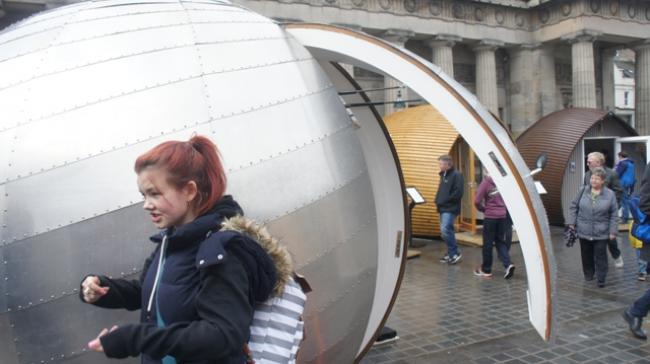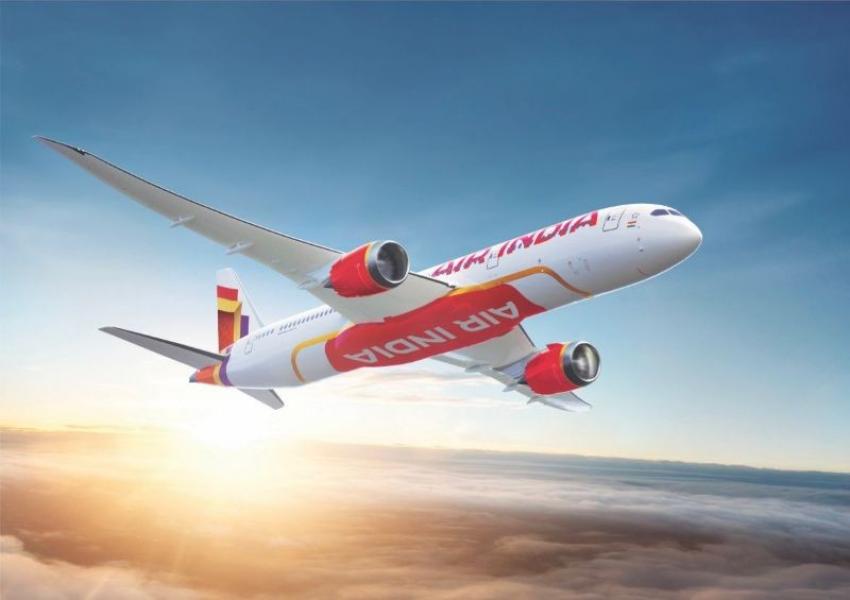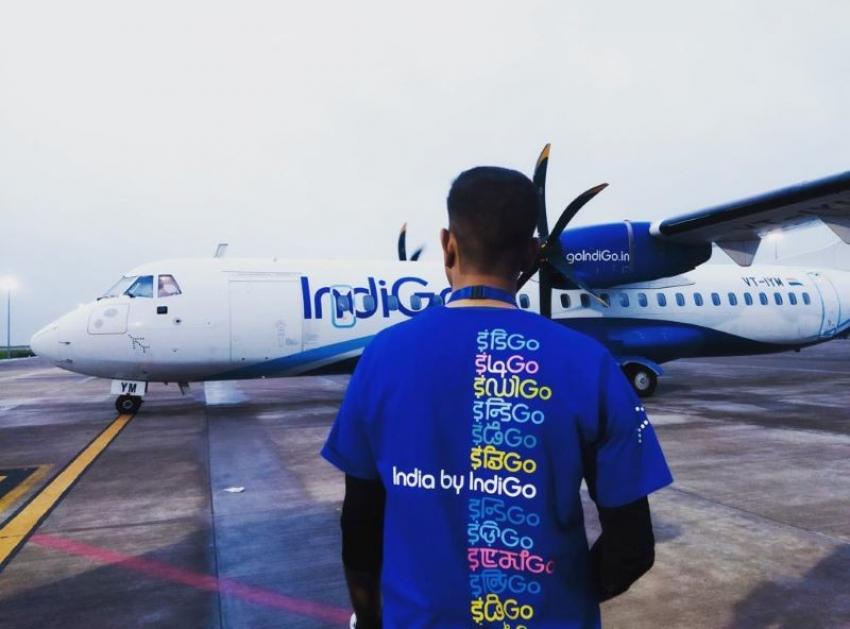27 Apr 2016, 09:47 pm

Some of them look straight out of sci-fi movies, designed somewhat like a spaceship, some like a designer camping tent, some like a boat upside down, some with interiors resembling a smartly done up budget hotel or cabin of a cruise vessel. But they are eye-catchers. On a rain-washed Edinburgh afternoon, people visiting the venues of the Edinburgh International Science Festival this April, were checking out these models in display at the city centre with great curiosity.
Urban populations are on the rise and the UN predicts that by 2060 about 66% of the world’s population will live in urban environments. A growing number of home developers are ‘thinking small’; challenging conventions and expectations as to what a home looks like and the size it is expected to be and looking to overcome obstacles through innovative architectural design.
In the year (2016) of Innovation, Architecture and Design in Scotland, the "Tiny Homes Village" is part of that campaign that had transformed the city centre into a platform for discussion of what turns a simple roof over our heads into somewhere we are happy to call home.
.jpg) From tiny homes to self-sustaining eco pods, traditional Mongolian yurts and emergency housing solutions, the models challenged Edinburgh’s city dwellers to consider how far – indeed how small – they would be prepared to go.
From tiny homes to self-sustaining eco pods, traditional Mongolian yurts and emergency housing solutions, the models challenged Edinburgh’s city dwellers to consider how far – indeed how small – they would be prepared to go.
So what are some of the ideas behind these tiny homes?
Dr Mike Page, Director, Cube Project, an initiative of the University of Hertfordshire, which builds tiny homes they call QB1, QB2, QB3 (on display at the festival), says:"In all our buildings we have aimed to show that even small houses can be fun and comfortable places to live, with very low demand on energy. We believe that many people who currently do not have access to housing (most notably in expensive cities like London) might deploy these efficient homes in small pieces of currently unused space."
"Ideally, they would be deployed several at a time, so a small community might be established around them," he says.
"With our first building, QB1, we wanted to show how one person, or two friendly people, could live a compact but modern life with a minimum impact on the environment. QB1 was only 3x3x3m internally, but took advantage of a number of low-energy technologies and techniques such that it generated as much energy, in an average year, as its occupants would use (even in the not so sunny UK; more so in India)."
.jpg) "So many people contacted us about QB1 that I designed, and we built, a production version, QB2. This was one metre bigger in one dimension, so 3mx4m in plan and 3m in height (all internal), but really did provide a very comfortable level of accommodation for a couple."
"So many people contacted us about QB1 that I designed, and we built, a production version, QB2. This was one metre bigger in one dimension, so 3mx4m in plan and 3m in height (all internal), but really did provide a very comfortable level of accommodation for a couple."
"QB3, our latest building, is the same internal volume as QB2, but is on one level, 3mx6m in plan, and 2m high. This makes it more appropriate for those with movement difficulties. It makes the most of its floor area by having walls that move, allowing one to reconfigure the internal spaces to the tasks and activities required at a given time."
Page is also inspired by the response to all their buildings so far.
"I can honestly say that we have had very little negative reaction. We are just launching the Cube Project commercially, with our partners Bolton Buildings, but the key enabler will be the availability of land with planning permission suitable for deploying these microhouses."
According to Page, it is feasible to have such homes in our urban areas in future.
"Even expensive urban areas have underused spaces, for instance, spaces on top of other buildings, or on land waiting for later development. The practical problems (we need only an electricity supply, water, and drainage) are much less than the challenge of getting those who either own the land, or those who can grant residential permission, to be more imaginative regards what is possible," he says.
.jpg) "If the exhibitions and festivals that we have attended are anything to go by, we have hundreds of potential customers, but only if we can get the land issue sorted. Maybe our initial client, therefore, could be a local authority with its own housing needs."
"If the exhibitions and festivals that we have attended are anything to go by, we have hundreds of potential customers, but only if we can get the land issue sorted. Maybe our initial client, therefore, could be a local authority with its own housing needs."
QB2 has been lived in for a year now, in an urban setting, as part of a trial with a London Borough. "If we could provide land with planning permission, my view is that we would have many, many customers. However, the people that would be most interested are the same people who do not have access to land. So there are issues other than just the design that will affect the uptake of our microhousing solutions," he says.
"Our microhouses could be used for leisure purposes in picturesque places," says Page.
According to Page, in countries like India they can be a solution to eco-friendly urban housing in future too.
"India has more sunshine and, therefore, great potential for use of, say, solar energy. Our designs can be deployed under license in India using a local workforce and local materials. The Cube Project microhouses, QB2 and QB3, are very comfortable to live in, and are much less polluting than previous generations of housing. The modern approach would match very well with the emerging image of India as a vibrant, hi-tech, and forward-looking country."
.jpg) Another version of upside down boat shaped size tiny homes that grabbed attention at the festival is from a company called Armadilla. A total of 506 Armadillas have been already sold to date. Armadilla is a family business based near Edinburgh. Archie Hunter, Managing Director, and his son Ross Hunter, designer, built the first prototype in 2009 and have honed and perfected the design during the last 6 years.
Another version of upside down boat shaped size tiny homes that grabbed attention at the festival is from a company called Armadilla. A total of 506 Armadillas have been already sold to date. Armadilla is a family business based near Edinburgh. Archie Hunter, Managing Director, and his son Ross Hunter, designer, built the first prototype in 2009 and have honed and perfected the design during the last 6 years.
"All Armadillas are designed to be constructed with three core principles in mind; durability, quality and longevity. Our unique steel base which is integrated into every Armadilla provides a rigid and perfectly level and square chassis to build from. Built from Grade a Siberian Larch and marine grade stainless steel fixings – every aspect of the armadillas design is to last and remain beautiful," said the makers.
.jpg) Dr Simon Gage, Director of The Edinburgh International Science Festival, says the tiny homes are meant for building a better eco-friendly world where people are grappling for space in urban centres.
Dr Simon Gage, Director of The Edinburgh International Science Festival, says the tiny homes are meant for building a better eco-friendly world where people are grappling for space in urban centres.
"We need interesting and economical solutions to urban space shortage. We have to make our infrastructure look beautiful. We have to think about how to make more beautiful cities.
“The houses in display here are all designed keeping in mind that people can actually live there. They are the poster boys of this festival and they provoke you to talk about issues [environment and urbanization]," says Dr. Gage.
"I also strongly believe that a house like QB3 have takers in countries like India or China. These are houses for young people and here you are not slave to electricity companies," he says.
"Also at the price of 40,000 British Pounds, a house like QB3 is costing only one sixth of a normal house in the UK," he says.
For details of Edinburgh festivals visit www.
#ScotSpirit @VisitScotland
- From Kennedy’s Proposal to 1850s Saloons: The Three Historic D.C. Restaurants Everyone Must Try
- This city has the best bagel in the US, and it’s not New York!
- I escaped to Pachmarhi — what I found in the queen of Satpura left me spellbound
- Air Canada just ranked the Best New Restaurants of 2025 - And the Top Spot isn't who you think
- Rediscovering Arunachal's Monpa Cuisine: One Woman’s Millet Momo Revolution
- Discovering Heritage: A visual journey through Odisha crafts museum Kalabhoomi
- From kebabs to biriyani: Lucknow gets UNESCO honour for its royal cuisine
- Delta takes Spanish flavours to the skies
- Kolkata’s iconic Kathi Roll among world’s top 10 wraps: TasteAtlas
- Yellow Taxis and the Colours of Puja
Air Canada has introduced a new non-stop route connecting Toronto with Rio de Janeiro, with the first flight landing in the Brazilian city on Friday morning.
Air India, India’s leading global airline, and Maldivian, the national airline of the Maldives, have entered a bilateral interline partnership aimed at boosting connectivity between the two countries.
IndiGo, India’s largest airline, is grappling with one of its most severe operational crises in recent years, with widespread flight delays and cancellations disrupting travel across the country for a second consecutive day.





